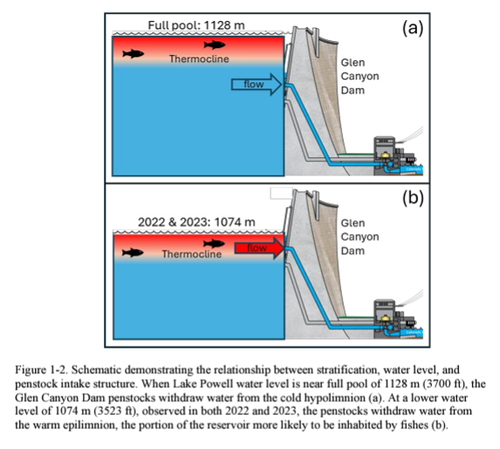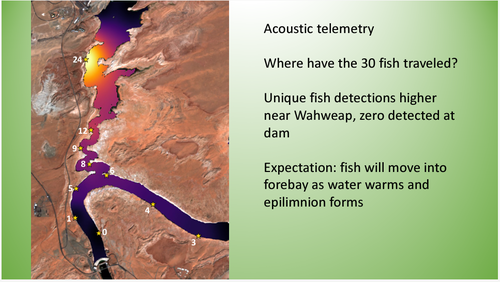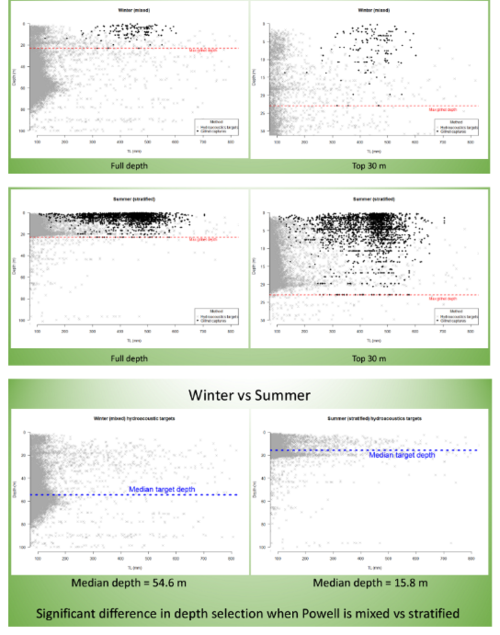Entrainment
|
|
Entrainment of warmwater nonnative fish through Glen Canyon DamWhen the reservoir was cold (<10 °C) and well-mixed, most fishes selected gently sloping habitat such as that found in Wahweap Bay (5 km from GCD), and thus winter entrainment risk is low for most species. When the reservoir was stratified (>20 °C surface temp.) fish were active in the forebay epilimnion within meters of the dam, increasing entrainment when the dam penstock is positioned within the epilimnion, as it was during our study, rather than below the thermocline when the reservoir water level is higher.
|
| -- |
-- |
-- |
|---|


